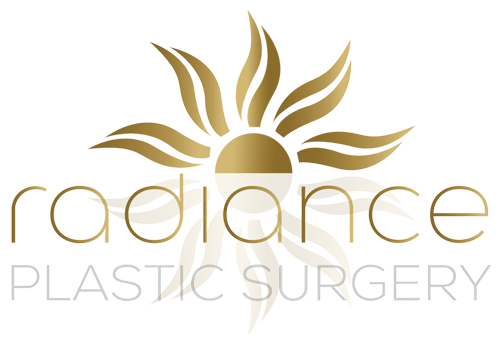When considering a mammogram for those with breast implants, it’s essential to understand how the procedure is adapted to accommodate the implants. Mammograms are an important screening tool for breast cancer detection, and having implants doesn’t keep you from participating in regular breast cancer screening. Women with breast implants must continue with regular mammograms, as breast implants can obscure some breast tissue, creating a need for additional imaging to view as much breast tissue as possible.
Technologists who perform mammograms on patients with breast implants use special techniques to gently displace the implant and allow better visualization of the breast tissue. This may include taking extra images known as implant displacement (ID) views. It is imperative to inform the mammography facility about your implants before your appointment so that they can accommodate you with the appropriate techniques and expertise. While the risk of implant rupture from a mammogram is very low, the procedure should always be performed at a centre experienced in imaging patients with implants to ensure the highest level of care and accuracy.
Key Takeaways
- Regular mammograms are important for breast cancer screening in individuals with breast implants.
- Special techniques are used during mammograms to improve the visualization of breast tissue around implants.
- Informing the mammography facility about the presence of breast implants allows for appropriate preparation and image acquisition.
Understanding Mammograms and Breast Implants
When considering mammograms with breast implants, comprehending the interaction between the implants and mammography technology is crucial. It involves understanding the implant materials, the fundamental mammography process, and how implants might influence the procedure’s efficacy.
Breast Implants and Their Composition
Breast implants are medical devices implanted into the breast to augment its size and shape. They are typically composed of either a silicone shell filled with silicone gel or a silicone shell filled with saline solution. The integrity of these materials during diagnostic procedures is a vital consideration. Silicone and saline implants interact differently with mammography, potentially affecting the clarity of the resulting images.
Basics of Mammography
Mammography is an X-ray imaging technique to visualize the breast tissue. The goal is to detect and diagnose breast conditions, including breast cancer. During a mammographic examination, your breast is compressed between two plates to spread the tissue apart for a clear X-ray image. The standard mammogram, known as a 2D mammogram, can also be supplemented by breast tomosynthesis, or 3D mammography, for more detailed images. For both diagnostic and digital mammogram procedures, radiation exposure at a safe level is used to capture the images.
Potential Impact of Implants on Mammogram Procedures
Breast implants may necessitate additional images called implant displacement views during a mammogram. These views involve pushing the implant back and pulling the breast tissue forward to improve the view of the breast tissue during the X-ray. This is crucial for allowing the technician to examine as much tissue as possible. Digital mammography and magnetic resonance imaging (MRI) are alternatives that may be used alongside traditional mammography to evaluate breast health in women with implants more effectively.
Breast Screening Protocols for Implant Patients
When you have breast implants, adhering to tailored screening protocols is essential. Understanding these tailored approaches contributes to effective cancer detection and implant management.
Screening Mammogram Specifications
For patients with breast implants, screening mammograms necessitates specialized techniques. A trained mammogram technologist will request implant displacement views, a method that moves the breast implants backward and brings the breast tissue into view. This can aid in reducing implant interference and improving the visualization of dense breast tissue.
Additional Imaging Techniques
At times, a screening mammogram may not be sufficient, particularly if you have dense breast tissue or are at high risk. A radiologist may recommend additional imaging techniques, such as a breast ultrasound or a breast MRI. These methods provide different perspectives and may reveal details that mammograms cannot, such as the presence of calcifications or lymphoma. Breast MRI is highly sensitive and can detect breast cancer in dense breasts, making it an invaluable resource in hospital radiology departments and even in some well-equipped mobile vans.
Identifying Implant Complications
Aside from cancer screening, radiologists also look for signs of implant complications like implant rupture or contractures. Special attention is given to calcium and implant integrity during imaging. If anything unusual is discovered, such as signs suggesting a breast implant rupture, additional follow-up procedures, such as MRI or needle biopsy, may be ordered. A technologist skilled in imaging patients with implants must be involved to ensure extra images are taken as necessary for thorough evaluation.
Risk Factors and Considerations
When considering a mammogram with breast implants, it is crucial to understand the risk factors and special considerations involved. This knowledge ensures that you remain proactive about breast cancer screening while taking into account the implications of implants.
Personal and Family Medical History
Your personal and family medical history is a fundamental component in determining your risk for breast cancer. If you have a family history of breast cancer, sharing this information with your healthcare provider is essential, as it may influence the frequency and type of breast cancer screening you receive. Be candid about any genetic predispositions and prior medical treatments that could impact your mammogram.
Risk of Developing Breast Cancer
Breast implants do not inherently increase your risk of developing breast cancer; however, they may create challenges during breast cancer screening. Studies have looked into possible connections between breast augmentation and breast cancer risk, yet the evidence does not suggest a direct causal relationship. Nevertheless, ensuring vigilance through regular screening is imperative.
Preparing for a Mammogram with Breast Implants
Before a mammogram, there are specific preparations necessary for those with breast implants. Although low, the risk of implant rupture and the potential for discomfort may be of concern. Inform the mammography technician of your implants, as different techniques, such as the Eklund displacement method, might be employed to obtain clearer images. Avoid using deodorant or antiperspirant before the procedure, as these can show up as calcifications on the mammogram images. It is also important to be aware of BIA-ALCL (breast implant-associated anaplastic large cell lymphoma), a rare type of lymphoma that could develop following breast implants and may be detected during screening. For more details on the effects implants have on mammography’s efficacy, review the study on breast implants and mammography examinations.

